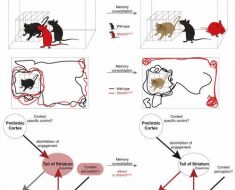A natural history study has provided the first comprehensive clinical description of spinal muscular atrophy (SMA) within the Amish and Mennonite communities and correlates ancestral chromosome 5 haplotypes and SMN2 copy number with disease severity.
SMA is a devastating genetic disease that affects the motor neurons that control movement, eating, and breathing. It represents the leading genetic cause of infant death worldwide, with an incidence of approximately 1 per 10,000 newborns worldwide and as many as 1 per 2,800 babies of Mennonite descent. The observations were conducted within a population-specific framework to elucidate subtle differences in disease expression and the subsequent impact of disease-modifying therapies administered early in life. Forty-two Mennonite and fourteen Amish patients with SMA were included in the study by practitioners and researchers at the Clinic for Special Children in Strasburg, PA. The study is published online today in PLOS ONE.
DNA microsatellites and 2.6 million-marker single nucleotide polymorphism (SNP) microarrays were used to examine the genetic composition of haplotypes, which revealed structural similarities among the various patient groups. The two major Mennonite haplotypes identified (M1a, M2) included 1 and 2 copies of SMN2 respectively, and the single Amish SMA haplotype (A1) had 1 copy of SMN2. M1a/M1a, M1a/M2, and M2/M2 were the prominent SMA genotypes.
The study reveals important differences in the timing and severity of motor nerve degeneration as a function of both SMN2 copy number and SMA haplotype. Genotypes with two copies of SMN2 were associated with earlier disease onset, more restricted motor development, and shorter survival than genotypes with three or four copies of SMN2. A more surprising finding, however, was the difference in clinical severity and survival between individuals with A1/A1 as compared to M1/M1 haplotypes, which convey the same number of SMN2 copies. The researchers plan to use whole exome sequence data to compare A1 and M1a at a higher resolution in an effort to account for these differences.
The research was conducted by a team including the study’s co-lead authors Vincent J. Carson, MD, Erik G. Puffenberger, PhD, from the Clinic for Special Children, Strasburg, PA; senior author Kevin A. Strauss, MD from the Clinic for Special Children, Strasburg, PA; Dominika Korulczyk, Karlla W. Brigatti, MS, LCGC, Millie Young, RNC, Ashlin S. Rodrigues, KaLynn K. Loeven from the Clinic for Special Children, Strasburg, PA and Lauren E. Bowser from the Clinic for Special Children, Strasburg, PA and Franklin and Marshall College, Lancaster, PA.
Source: Read Full Article





